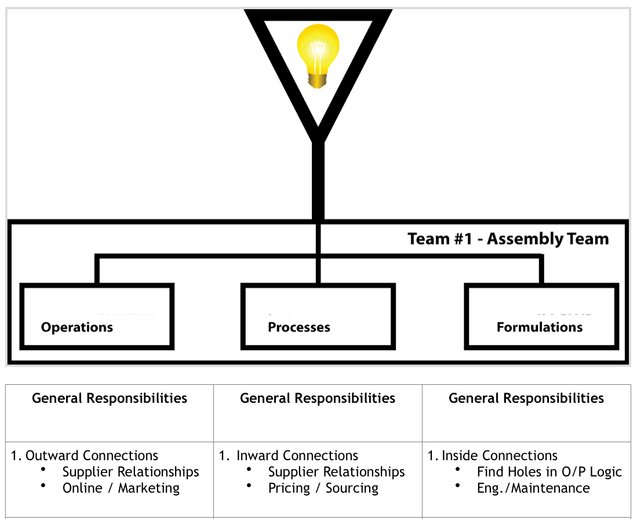The Materialization of Decentralized Autonomous Organizations (DAOs) - v1
This is the arrival of an idea that has been a long time coming in my mind. This is my first vision of building out a decentralized organization into the material world, built on the EOS blockchain with the help of artificial intelligence. The basic concept is the complete removal of all executives and administration, replacing those functions with a combination of blockchain and AI. This is the first iteration of what will be an evolving process.
The motivating and driving force of any organization is an idea. In this case, an idea represents the leadership. This is because one individual can only see things from their own unique perspective. It is important for consensus to be reached in order to move forward. Small teams are hired (as a group) to complement each other’s strengths and weaknesses. The size and number (three) of members in each team promotes consensus to be more easily reached. This creates a sense of solidarity within the team and organization as a whole. If one member of a team leaves, the whole team will be replaced with another. This type of organization truly demands loyalty between all its members.
The figure above shows the conceptual framework surrounding the construction of a new organization. Once a business proposal (i.e. idea) is accepted and the funding has been secured via crowd-funding on the EOS blockchain (with some predefined repayment based on estimated risk), an assembly team sets off to build the bridge between the team and idea (i.e. early product development and optimization). The circle around the organization represents the interface between the business and the outside markets. The triangle in the center, as mentioned, represents the idea and will eventually be interfaced by all three teams who gain perspectives from different sides of the puzzle.
The business logic of small teams is to induce cooperation and consensus, but also to allow friendly competition amongst its members. These competitions will be focused on delivering clear measurable value from product development to customer satisfaction, and will use a small pool of reserve money to incentivize team members with the chance to win new products such as a MacBook Pro, or salary based incentives. Once the two additional teams have been brought on board, complex interfaces will emerge between all of the components to the inside world (the business) and the outside world (the markets).
Team 1 – Assembly Team – The assembly team is the first line of attack on the idea and market. The goal of the assembly team will be to develop the first product and find the path to market. The small three-person team will operate as a single unit, making consensus decisions. Figure 2 outlines the initial personnel for the assembly team, and is divided into operations, processes, and formulations. It is the responsibility of the assembly team not just to build the initial product, but also to build autonomous processes to scale. This will be done within reason for the first few years, but the team will seek to build fully autonomous processes by 2025.
Team 2 – Market Team – After an initial and successful product launch, a market oriented team will be brought on board to get continual feedback from customers and will play a two-fold role (1) Advise on new directions for product development and (2) Build excitement beyond capacity.
Team 3 – Business Team – The last team brought on board will focus on the development of new strategic partnerships and possible M&A activities. This is unlikely to occur prior to year 4, unless the market demands more rapid scaling.

